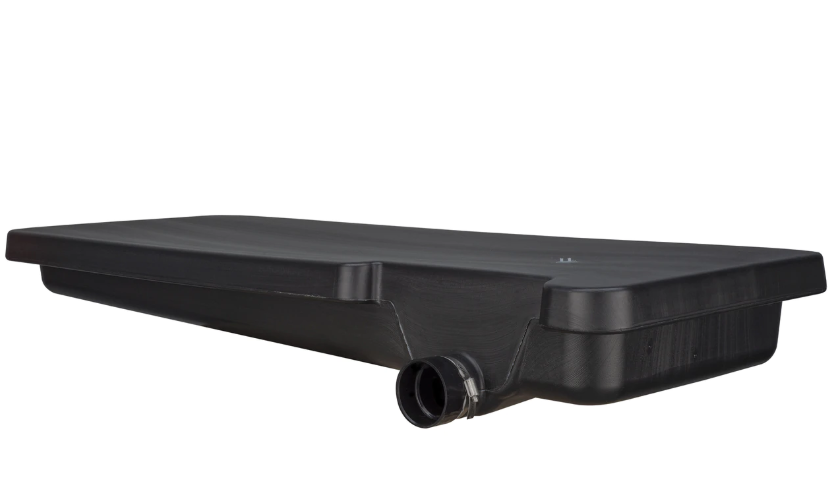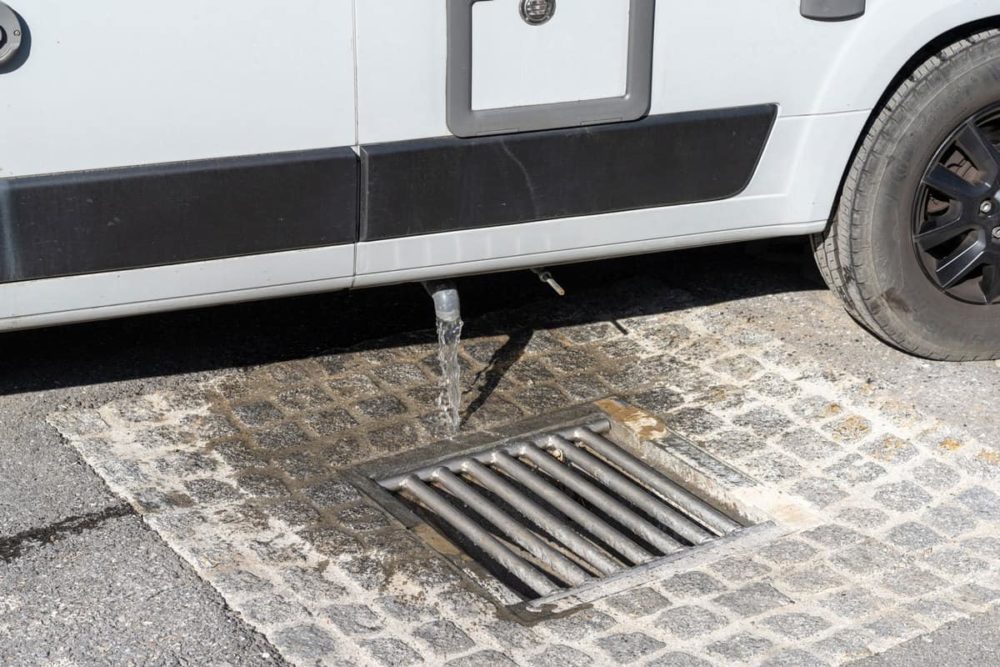All You Wanted to Know About RV Gray Water Tanks
RV life allows you to be free and explore the world at your own leisure. However, as with all things, there are always chores to do. Your RV gray water tank holds wastewater from your washing up and showers but what do you do when it’s full? Where do you drain it and what do you do if it breaks?
Don’t worry, this article is going to answer all of these questions and more as we look at how to maintain your gray tank to keep you moving with ease on your RV journey.

What is a gray water tank in an RV?
Your gray water tank is an integral part of your RV as it holds all of your waste from your shower and sink. Although it doesn’t hold waste from your toilet, it still needs cleaning and regular maintenance.
Contents
- 1 What is a gray water tank in an RV?
- 2 What are RV gray water tanks made of?
- 3 Do all RVs have a gray water tank?
- 4 Gray water tank vs black water tank
- 5 How big is an RV gray water tank?
- 6 What happens when the gray water tank is full?
- 7 How do I maintain my RV gray water tank?
- 8 How much is a gray water tank for an RV?
- 9 Where to buy an RV gray water tank
What are RV gray water tanks made of?
An RV gray water tank is usually made of polyethylene resin, which is a long-lasting material that is resilient against corrosion and cracks. The tanks come in different sizes to suit your RV but all are made of the same material as it is the best quality for this type of water tank. Although tough, there is still a possibility of it breaking so it needs to be well looked after.
Do all RVs have a gray water tank?
Most RVs contain two water tanks, a gray water tank and a black tank, each of which is necessary for different waste purposes. Before setting out on an RV excursion, it’s important to ensure that you have both types of tanks on board. You will also need a fresh water tank.
Gray water tank vs black water tank
The gray water tank is there to collect things like soap and food waste from your shower and sink. The black tank collects the water from your toilet. Both water tanks are important and both need to be properly drained and cleaned regularly.
How big is an RV gray water tank?
The size of your gray water tank depends on the size of your van. It tends to correspond to the needs of the van, so the tank capacity can vary.
For example, a class A van’s gray tank may hold from 40 to 65 gallons. Some larger RVs may have a large one with a capacity of 95 gallons. Some vans may even have two smaller gray ones – one for the shower and one for the sink.
What happens when the gray water tank is full?
Your gray water tank will either have a gauge or a holding sensor that will alert you to when it is full. However, if the gauge or sensor isn’t working, you can tell when your tank is full when the water from your sink or shower doesn’t drain. How quickly it fills, of course, depends on your daily water use.
When your tank is full it can be dumped easily, but it’s important to wear antiseptic gloves. To drain, look for the gray water valve on the outside of your van, and connect your RV sewer hose. The other end of the valve can be attached to the sewer drainer at the designated dump station.
Once all the water has drained through the sewer hose then you can disconnect it and close the valve. Finally, give your water tank a quick rinse out using a tank rinser.
When it’s time to drain your tank, always look for specific gray water dumping sites – never drain onto the road.
How do I maintain my RV gray water tank?
Your RV gray water tank will need maintenance as it is an important part of your RV life. Making sure you maintain your water tanks will help them to keep it working well whilst you are on the road. Not only do you need to clean it regularly, but you should also check the gray water tank often for leaks.
To maintain the tank accordingly, consider the following points:
Tools and equipment needed
You will need a sewer hose that fits the gray water valve on the outside of your van. You also need gloves as emptying the tanks can be messy.
Cleaning the gray tank
Once you have drained the tank, you will also need to clean it. You should give the tank a quick rinse every time you drain the tank, and you should give it a deeper clean once every so often. To give it a deeper clean, you should rinse it as normal, but add half a cup of laundry detergent and half a cup of a cleaning agent, such as Calgon. Baking soda also does a good job.
Draining the gray tank
You can’t simply drain your water tank anywhere, it must be properly disposed of at a dumping site. Once you have located a designated dumping site, hook up your hose to the valve and then to the sewer drain and allow the water to run out. Always make sure the water drains completely before you disconnect the hose.

How to fix a crack in an RV gray water tank
If you find a crack in your RV gray water tank, there are several popular D.I.Y. ways to fix your tank. If the crack is particularly small, you can easily seal it up using M-seal or something similar, which is great for repairing broken plastic and is often used to prevent water leakage.
Step 1
Drain the water tank as well as you can and then dry it.
Step 2
Once dry, apply the M-seal to the damaged area.
Step 3
Leave the sealed crack to dry before using the water tank.
You could also try JB Weld, Loctite Plastics Bonding System, or silicone.
If none of the above work, or if the crack is simply too big, we recommend placing a bucket underneath the tank to catch all the water that spills out in the meantime. Pop into the next RV parts or salvage yard you pass and invest in a new one.
Use treatment chemicals
On top of using baking soda and cleaning detergent, you can also use special treatment chemicals. These are more important in your black water tank due to the type of waste it holds, but it’s also a good cleaning solution for RV gray water tanks, too.
For example, if you smell a foul odor coming from your gray water tank, it’s definitely worth using treatment chemicals during your deep clean.
Use water softener
A water softener can be poured into your tank to help loosen the debris stuck to the side of the tank, which can make deep cleaning and maintaining your gray water tank a lot easier. Food, grease, and grime build-up can affect your tank’s ability to function correctly.
Repeat regularly
As with all things, repetition is key. You need to make sure that every time you remove your water tank you are draining it correctly and rinsing it out. Make sure to add cleaning detergent and water softener each time to prevent debris build-up. Maintenance will keep your tank functioning at its best, and ensure the longevity of the RV part.
How much is a gray water tank for an RV?
Prices for your gray water tank will vary depending on the retailer and the size of the tank your RV needs. A 4-gallon tank costs around $185, a 10 gallon around $245, or $326 for a 20-gallon tank. Shop around to find the best one for your needs.
Where to buy an RV gray water tank
You can purchase your water tank from RV parts retailers or online stores. Alternatively, you could pick up good-quality second-hand holding tanks from a salvage yard.
